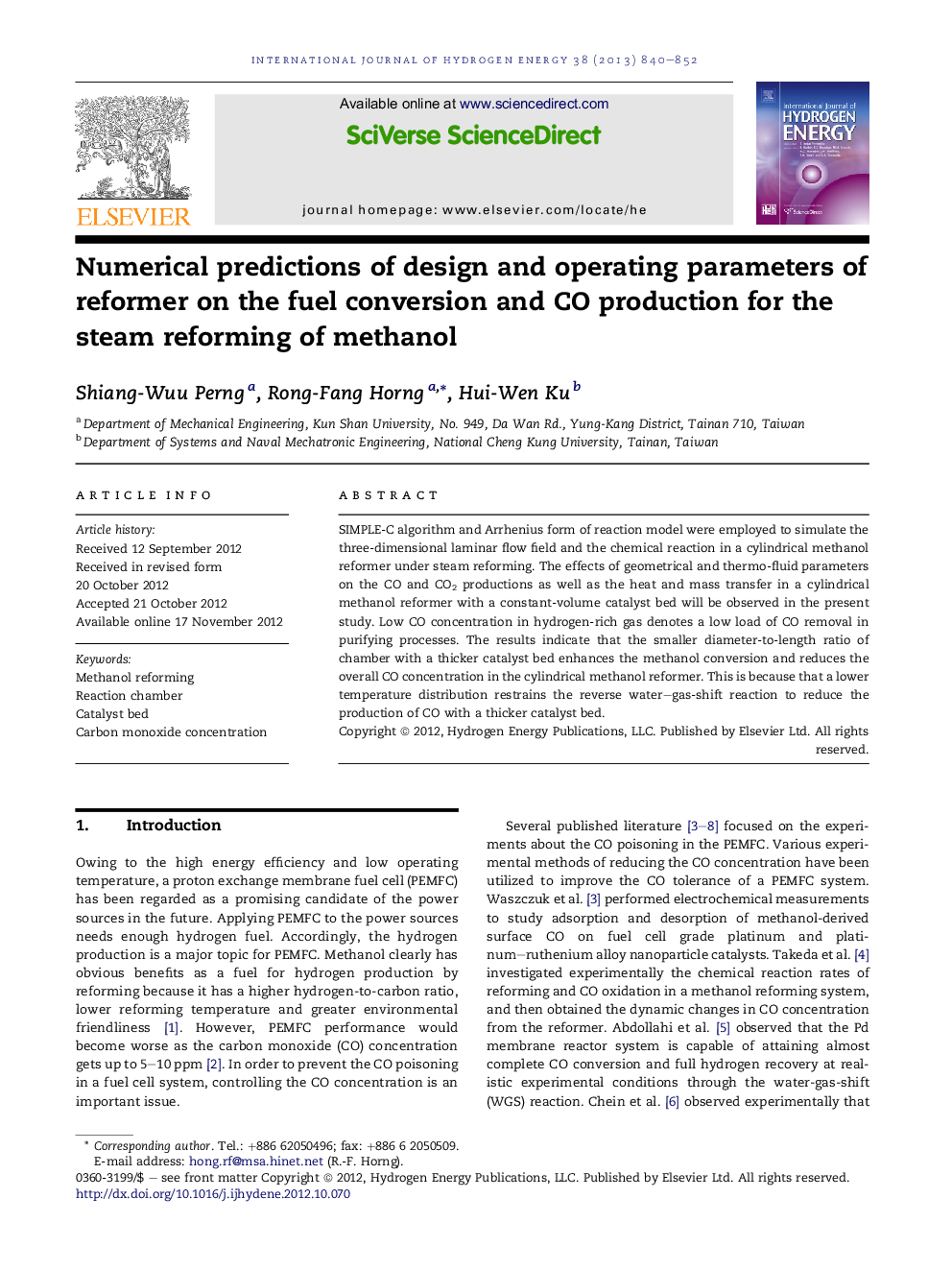| Article ID | Journal | Published Year | Pages | File Type |
|---|---|---|---|---|
| 1282050 | International Journal of Hydrogen Energy | 2013 | 13 Pages |
SIMPLE-C algorithm and Arrhenius form of reaction model were employed to simulate the three-dimensional laminar flow field and the chemical reaction in a cylindrical methanol reformer under steam reforming. The effects of geometrical and thermo-fluid parameters on the CO and CO2 productions as well as the heat and mass transfer in a cylindrical methanol reformer with a constant-volume catalyst bed will be observed in the present study. Low CO concentration in hydrogen-rich gas denotes a low load of CO removal in purifying processes. The results indicate that the smaller diameter-to-length ratio of chamber with a thicker catalyst bed enhances the methanol conversion and reduces the overall CO concentration in the cylindrical methanol reformer. This is because that a lower temperature distribution restrains the reverse water–gas-shift reaction to reduce the production of CO with a thicker catalyst bed.
► A model was used to simulate a steam reforming in a methanol reformer. ► Geometrical and thermo-fluid parameters on CO and CO2 productions were studied. ► Smaller diameter-to-length ratio of chamber reduces the overall CO emissions.
